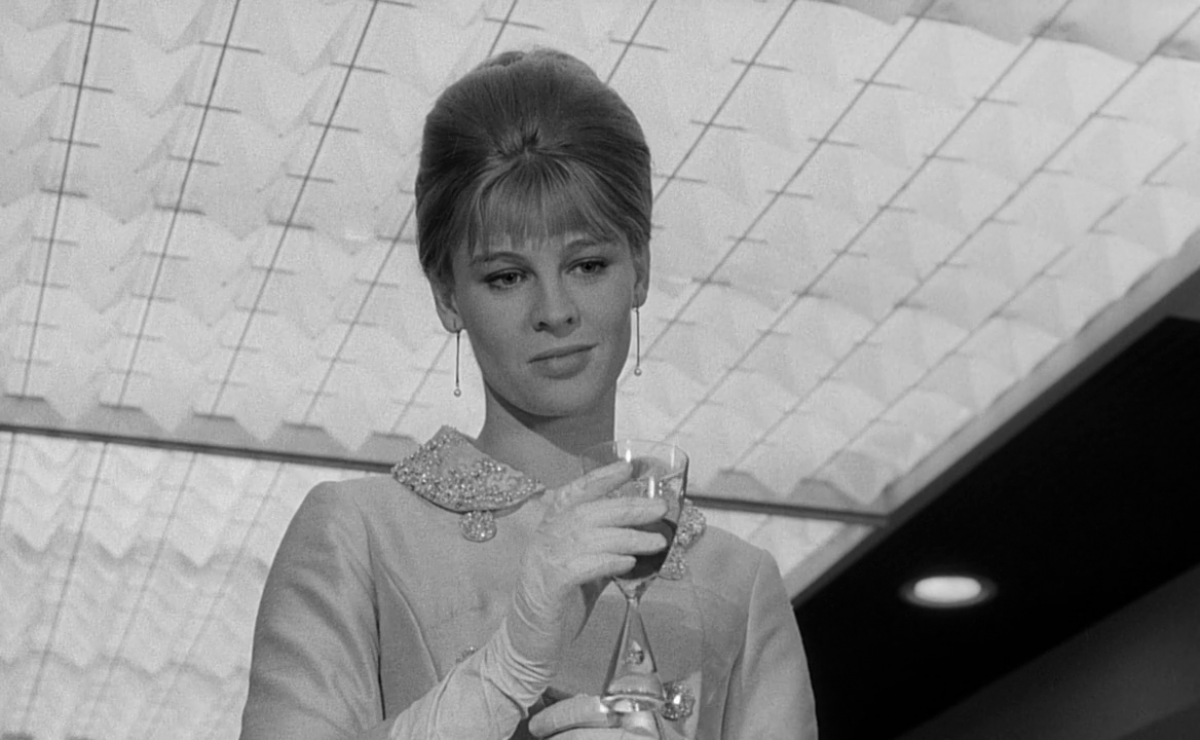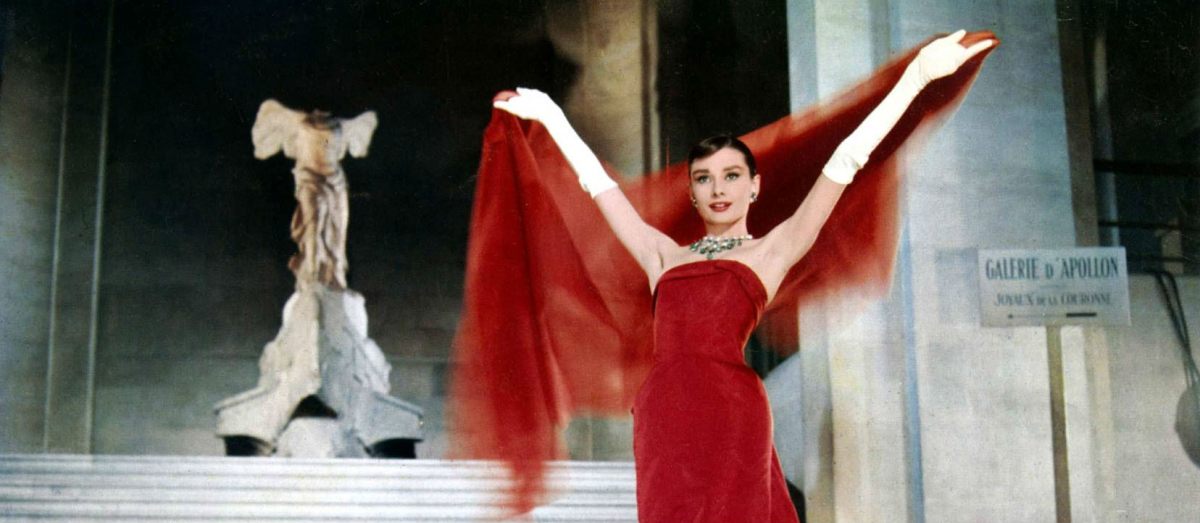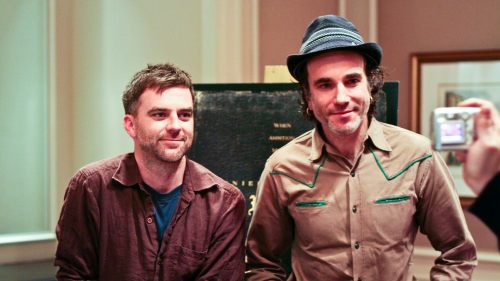Fashion And Desire In Hollywood’s Golden Era
Phantom Thread is hitting theaters. Get your tickets here!
During the 1950s and '60s, the colorful world of fashion took over the screen. More than just an obsession with beautiful red-lipped women in avant-garde clothes, movies from Hollywood and Britain glamorized the inner lives and tabloid dramas of their fictionalized fashion worlds. With the release of P.T. Anderson’s newest film, Phantom Thread, about the troubled romance between a dressmaker and his young muse and lover in 1950s London, let’s take a look back at the era's fondness for fashion and desire.

In Darling, Julie Christie stars as Diana, a model at the height of Britain’s fashion revolution in the 1960s. When she is twenty, journalist Robert Gold (Dirk Bogarde), interviews her on the street about the new counter-culture. Watching the final edit in studio, Robert runs his fingers over his lips. He wants to possess Diana for her beauty and she wants to use him to be a part of the right crowd: they fall into lust. After they’ve moved into together they throw an overwhelming party in their small apartment and in the blink of a jump cut, they lie in bed exhausted. “Your friends are so pretty,” he tells her. “Your friends are so intelligent,” she responds. Bodies splayed on the made bed, they are pushed to the physical limits of their codependency as her career takes off. As the world opens up to Diana beyond what Robert can offer, he asks her to marry him. Grabbing her neck, perhaps holding onto the last vestige of power he has, she still refuses.
This becomes something of a recurrent theme in many fashion films. They are more than stories of beautiful clothing, but romantic stories of obsession and liberty. These are often films about unusually ambitious women and how far they are willing to push their upward mobility. In the Hollywood world of alpha males who take charge, these women represent exotic dreams but also idle threats to the men’s fragile supremacy.
_02_1200_834_81_s.jpg)
Even in a relatively tame movie like Designing Woman, a romantic odd-couple comedy where a top-tier fashion designer (Lauren Bacall) and a sports journalist (Gregory Peck) marry after knowing each other for just 8 days, the tension between desire and frustration are key. Unlike most fashion-films, Marilla (Lauren Bacall) is not a model but one of the most sought-after designers in all of New York, the American capital of textiles and fashion in the 1950s.
After a night of binge drinking and gambling, Mike (Gregory Peck) sees Marilla for the first time sober, in the bright California sun wearing a lemon-colored bathing suit. Enchanted by her wit and beauty, he quickly falls in love and marries her without so much as asking what she does for a living. Suddenly back in New York, he becomes aware of her success and wealth, only to feel humiliated by her standing. The subtext of most of their conflict will be rooted in his creeping insecurity that his wife holds a better hand than he does and Mike tries to “tame” his new wife by pushing her into subservience.
A similar idea emerges in the gritty almost-noir, I Can Get it for you Wholesale, about the cutthroat world of the New York textile industry, centered on the upward mobility of a young model, Harriet Boyd (Susan Hayward), who fights her way to becoming the lead designer of her very own company. With dialogue that cuts like a razor blade, the film is similarly centered on a toxic love triangle, where Harriet is torn between expectation and ambition. As the man she loves pushes her to cool down her ambition, another suitor tries to buy her affection with the promise of making her one of New Yorker’s biggest designers.
The little-seen film toys with the strange and even fetishistic desires of the industry. Early on, when Harriet is still just a model, one of her colleagues warns her that a buyer is a “toucher.” When she goes to present the new style, the portly man grabs the material between his fingers, looking her in the eyes. More than just transactional, this is a moment where the power of fashion extends beyond clothing, but into the realm of control, risk, and reward. Like thread on a spinning wheel, fashion, obsession, and desire only become more tightly bound as Harriet’s career takes off.

Even in one of the era’s most wholesome, and most famous fashion film, Funny Face, the world of fashion extends strangely into an obsession. In a kind of upbeat Vertigo, Dick Avery (Fred Astaire), discovers Jo (Audrey Hepburn) and works to shape her into the fashion world’s next It Girl. Even taking the film’s best-known sequence, often referred to as The Bohemian Dance, there is a hint of sadomasochism even before Dick steps into the smokey Parisian club. Sitting outside the entrance a French couple scream, fight and kiss in the span of a wink, leading Dick to quip, “This must be the place,” as he enters the underground cavern of boozy Frenchman and colored lights.
The bohemian dance, a scene in which Hepburn dressed in all black, does a free-wheeling beatnik style improvisational routine is meant to reflect a forward-thinking fashion impulse. She is not like the models that came before her, she is an individual. Over the course of Funny Face, that innate sense of identity is shaped and branded for popular consumption and also for that of the men around her. For women, fashion can be a gateway to expressing individuality, yet, it seems that in the cinema (as it likely is in life, sometimes), that the autonomy of fashion is often twisted to suit male desire. In these films about the forward-looking world of style, there is an undercurrent of control and restriction that uplifts women only to cut them down.


